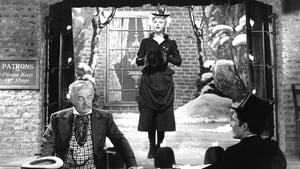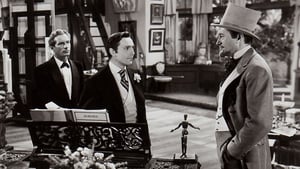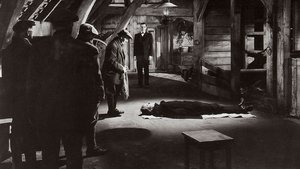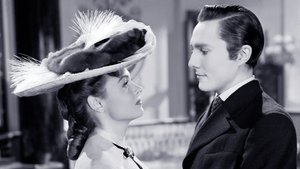Contact: info@alwanfilm.com
Video Sources 0 Views
- Watch trailer
- The Picture of Dorian Gray


Synopsis
Table of Contents
ToggleReview: The Picture of Dorian Gray 1945 Colorized – A Haunting Tale of Vanity and Corruption

Introduction
The Picture of Dorian Gray, released in 1945, is a haunting adaptation of Oscar Wilde’s classic novel directed by Albert Lewin. Renowned for its dark atmosphere, compelling performances, and timeless themes, this cinematic masterpiece continues to captivate audiences with its exploration of vanity, corruption, and the consequences of unchecked desire. In this review, we’ll delve into the haunting beauty of The Picture of Dorian Gray and its enduring legacy in the world of cinema.
Check The Full Colorized Movies List
Check Our Colorized Movies Trailer Channel
Understanding The Picture of Dorian Gray 1945 Colorized: Director, Cast, and Genre
Directed by Albert Lewin, The Picture of Dorian Gray features a talented cast led by George Sanders, Hurd Hatfield, and Angela Lansbury. The film belongs to the gothic horror genre, known for its dark themes, atmospheric visuals, and psychological depth.
Exploring the World of The Picture of Dorian Gray 1945 Colorized: Plot and Characters
The Picture of Dorian Gray tells the story of Dorian Gray, a young and handsome man who becomes the subject of a painting by artist Basil Hallward. As Dorian’s life descends into a whirlwind of decadence and debauchery, his portrait ages and decays, reflecting the true extent of his moral corruption. As the years pass, Dorian’s descent into darkness threatens to consume him and everyone around him.
The Art of Film Colorization
While The Picture of Dorian Gray was originally filmed in black and white, its early colorized version adds a new layer of depth to its atmospheric visuals. The colorization process enhances the film’s gothic atmosphere and captures the nuances of its dark themes with striking clarity.
Early Colored Films: A Brief History
The history of early colored films is marked by innovation and experimentation as filmmakers sought to enhance the visual appeal of their movies. From hand-tinted frames to pioneering technicolor processes, the evolution of colorization techniques transformed the cinematic landscape, offering audiences a new way to experience the darkness and intensity of gothic horror.
The Picture of Dorian Gray (1945) and Its Early Colored Version
The decision to release The Picture of Dorian Gray in a colorized format was made with the intention of immersing audiences in the gothic beauty of its atmospheric cinematography and enhancing the film’s visual impact. While some purists may prefer the original black and white version, the early colorized edition of The Picture of Dorian Gray adds a new layer of depth to its haunting visuals and captures the moral complexity of its characters with breathtaking clarity.
The Debate Over Film Colorization
The debate over film colorization continues to divide audiences and industry professionals alike. While some argue that colorization breathes new life into classic films and makes them more accessible to modern audiences, others maintain that it compromises the artistic integrity of the original work. As technology advances and filmmaking techniques evolve, the debate over colorization remains a topic of ongoing discussion within the film community.
Examining The Picture of Dorian Gray (1945) as an Early Colored Film
Viewing The Picture of Dorian Gray in its early colorized iteration offers audiences a fresh perspective on its haunting visuals and psychological depth. The colorization process enhances the film’s gothic atmosphere and captures the moral ambiguity of its characters with stunning clarity. As viewers are drawn into Dorian’s dark and twisted world, they are treated to a visual feast that immerses them in the timeless themes of vanity, corruption, and the pursuit of eternal youth.
Influence and Legacy: The Picture of Dorian Gray 1945 Colorized’s Impact on Cinema
The Picture of Dorian Gray is widely regarded as a masterpiece of gothic horror that continues to influence filmmakers and inspire new generations of cinephiles. Its haunting atmosphere, compelling storyline, and timeless themes have left an indelible mark on cinema, shaping the way we understand and appreciate the darker aspects of human nature.
Director’s Cinematic Legacy: Beyond The Picture of Dorian Gray 1945 Colorized
Albert Lewin’s directorial legacy extends far beyond The Picture of Dorian Gray, encompassing a diverse body of work that includes acclaimed films such as Pandora and the Flying Dutchman and The Moon and Sixpence. As one of the most visionary filmmakers of his generation, Lewin was known for his ability to craft visually stunning films that explored the complexities of the human condition with depth and nuance. The Picture of Dorian Gray stands as a testament to his talent and creativity, solidifying his reputation as one of the great auteurs of classic Hollywood cinema.
Themes Explored in The Picture of Dorian Gray 1945 Colorized
At its core, The Picture of Dorian Gray explores themes of vanity, corruption, and the consequences of unchecked desire in the dark and decadent world of Victorian England. Through its haunting atmosphere and morally ambiguous characters, the film offers a nuanced portrayal of the human condition, challenging viewers to confront their own beliefs about right and wrong as they navigate the treacherous waters of temptation and sin.
Reception and Controversy Surrounding The Picture of Dorian Gray 1945 Colorized
Upon its release, The Picture of Dorian Gray received widespread critical acclaim for its haunting atmosphere, compelling performances, and timeless themes. While the decision to release the film in a colorized format sparked debate among purists, its enduring popularity has cemented its status as a timeless classic of gothic horror.
Where to Watch The Picture of Dorian Gray 1945 Colorized Online
For those eager to experience The Picture of Dorian Gray for themselves, the film is readily available on popular streaming platforms such as Amazon Prime Video, Google Play Movies, and iTunes. Whether viewed in its original black and white format or its early colorized iteration, The Picture of Dorian Gray offers a cinematic experience that is both haunting and visually stunning.
FAQs About The Picture of Dorian Gray 1945 Colorized
1. Is The Picture of Dorian Gray based on a true story?
No, The Picture of Dorian Gray is a fictional film based on the classic novel by Oscar Wilde. While the film’s storyline may draw inspiration from real-life events and historical figures, its characters and plot are works of fiction.
2. Who starred in The Picture of Dorian Gray?
The Picture of Dorian Gray stars George Sanders in the role of Lord Henry Wotton, a charismatic aristocrat who leads Dorian Gray astray. He is supported by Hurd Hatfield in the title role of Dorian Gray and Angela Lansbury as Sibyl Vane, a young actress whose tragic fate is intertwined with Dorian’s.
3. What is the central message of The Picture of Dorian Gray?
At its core, The Picture of Dorian Gray explores the consequences of vanity, corruption, and the pursuit of eternal youth. Through its haunting atmosphere and morally complex characters, the film offers a nuanced portrayal of the human condition, challenging viewers to confront their own beliefs about right and wrong as they navigate the treacherous waters of temptation and sin.
4. Why was The Picture of Dorian Gray released in a colorized format?
The decision to release The Picture of Dorian Gray in a colorized format was made with the intention of immersing audiences in the gothic beauty of its atmospheric cinematography and enhancing the film’s visual impact. While some purists may prefer the original black and white version, the early colorized edition of The Picture of Dorian Gray adds a new layer of depth to its haunting visuals and captures the moral complexity of its characters with breathtaking clarity.
5. What is the legacy of The Picture of Dorian Gray?
The Picture of Dorian Gray is widely regarded as a masterpiece of gothic horror that continues to influence filmmakers and inspire new generations of cinephiles. Its haunting atmosphere, compelling storyline, and timeless themes have left an indelible mark on cinema, shaping the way we understand and appreciate the darker aspects of human nature.
6. Are there any sequels or remakes of The Picture of Dorian Gray?
While there have been several adaptations of Oscar Wilde’s classic novel, including a 1973 made-for-television film and a 2009 movie starring Ben Barnes, none have matched the haunting beauty and psychological depth of the original 1945 classic.
7. Where can I watch The Picture of Dorian Gray online?
For those eager to experience The Picture of Dorian Gray for themselves, the film is readily available on popular streaming platforms such as Amazon Prime Video, Google Play Movies, and iTunes. Whether viewed in its original black and white format or its early colorized iteration, The Picture of Dorian Gray offers a cinematic experience that is both haunting and visually stunning.
Conclusion
In conclusion, The Picture of Dorian Gray (1945) stands as a haunting masterpiece of gothic horror that continues to captivate audiences with its atmospheric cinematography, compelling performances, and timeless themes. Whether viewed in its original black and white format or its early colorized iteration, Albert Lewin’s insightful direction and the stellar performances of the cast offer a cinematic experience that is both haunting and visually stunning. As viewers are drawn into the dark and twisted world of Dorian Gray, they are treated to a visceral journey that explores the consequences of vanity, corruption, and the pursuit of eternal youth. The Picture of Dorian Gray remains a timeless classic that continues to enthrall and inspire audiences around the world.














